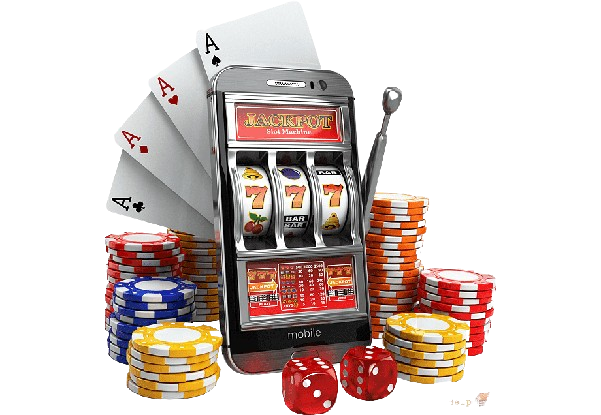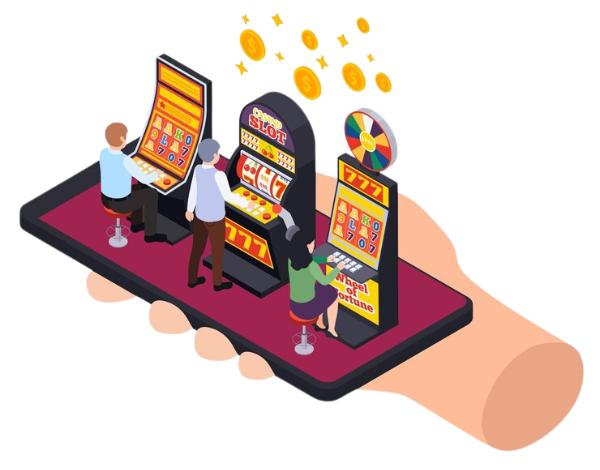Introduction
The world of slot gaming has undergone tremendous changes over the past few decades, with technological advancements continually shaping and enhancing the player experience. Among the most exciting innovations is Augmented Reality (AR), which has the potential to transform slot gaming in unprecedented ways. This article explores how AR is impacting slot gaming experiences, delving into the implications for slot game development, the services offered by slot game development companies, and the broader game development Company.
Game Development company
Transform Slot Games with Expert Sound Design.

1. The Evolution of Slot Gaming
1.1 Historical Context
Slot games have undergone a remarkable transformation from their early mechanical origins to the sophisticated digital experiences we know today. The inception of slot machines dates back to 1895 when Charles Fey invented the Liberty Bell, the first slot machine. This early machine featured three spinning reels with basic symbols such as horseshoes, bells, and playing cards. It was entirely mechanical, relying on physical mechanisms to determine outcomes. Despite its simplicity, the Liberty Bell laid the foundation for the slot gaming industry, introducing the concept of random outcomes and player engagement through spinning reels.
As the 20th century progressed, slot machines became more advanced, incorporating electric components and evolving into video slots. These innovations set the stage for the next major leap in slot gaming: the digital revolution.
1.2 The Digital Revolution
The advent of the digital age marked a pivotal turning point in slot gaming. The introduction of online casinos and advancements in software technology fundamentally changed the landscape of slot games. The transition from mechanical to digital formats enabled developers to create games with high-definition graphics, engaging sound effects, and a diverse range of themes.
2. Augmented Reality: An Overview
2.1 Defining Augmented Reality
Augmented Reality (AR) is a technology that superimposes digital information—such as graphics, sounds, and other sensory enhancements—onto the real world. Unlike Virtual Reality (VR), which immerses users in a fully digital environment, AR enhances the user’s perception of the real world by adding digital layers of information to their immediate surroundings. This blending of digital and physical elements creates a mixed reality experience that enriches how users interact with their environment.
In practical terms, AR technology can display digital images, text, or animations overlaid on the real-world view through devices such as smartphones, tablets, and AR glasses. This interactive approach allows users to engage with digital content in a more tangible and contextually relevant manner.
2.2 AR Technology and Applications
AR technology employs various devices and platforms to merge digital content with the physical world. Key technologies involved include:
- Smartphones and Tablets: These devices use built-in cameras, sensors, and displays to project AR content. Popular applications include interactive games, navigation aids, and educational tools that overlay information on the camera feed.
- AR Glasses and Headsets: These wearable devices provide a more immersive AR experience by projecting digital content directly into the user’s field of view. Examples include Microsoft’s HoloLens and Google Glass, which can display contextual information and interactive elements while leaving the user’s hands free.
Applications of AR:
- Gaming: In the gaming industry, AR enhances player immersion by integrating virtual elements into the real world. Games like Pokémon GO utilize AR to overlay virtual creatures onto real-world environments, encouraging players to explore and interact with their surroundings in new ways. AR in gaming creates a more engaging and interactive experience by merging gameplay with physical activity.
- Education: AR has significant educational applications, providing interactive and engaging learning experiences. For instance, AR can visualize complex concepts, such as historical events or scientific processes, in a way that is both informative and immersive. Educational AR apps can overlay information onto physical objects or environments, making learning more dynamic and interactive.
- Retail: In the retail sector, AR enhances the shopping experience by allowing customers to visualize products in their own space before making a purchase. For example, AR apps can help users see how furniture would look in their home or how clothing would fit without trying it on physically. This technology improves decision-making and customer satisfaction.
- Healthcare: AR applications in healthcare include surgical navigation systems and patient education tools. Surgeons can use AR to overlay critical information during procedures, improving precision and outcomes. Additionally, AR can help patients understand medical conditions and treatments by visualizing complex information in an accessible manner.

3. The Impact of AR on Slot Gaming
3.1 Enhancing Visual Appeal
One of the most profound impacts of Augmented Reality (AR) on slot gaming is the enhancement of visual appeal. AR technology enables the integration of 3D graphics and animations into the real world, creating a visually stunning and engaging experience for players. For example, slot symbols, reels, and bonus features can be projected into the player’s physical environment, making the game feel more dynamic and interactive.
Imagine a slot machine where, instead of just watching spinning reels on a screen, players see animated symbols materialize and interact with their surroundings. This could include virtual coins falling from the ceiling or symbols appearing on their living room table. Such visual enhancements make the gaming experience more immersive and exciting, providing players with a richer and more engaging visual experience than traditional slot machines.
3.2 Creating Immersive Experiences
AR can significantly transform traditional slot games by overlaying game elements onto physical objects. This innovation allows for a level of immersion that blends digital and physical realities. For instance, players could interact with a slot game where the reels, symbols, and bonus rounds are projected onto a physical slot machine or other real-world surfaces.
Consider a scenario where a physical slot machine is augmented with AR technology. Players could see the reels spinning and symbols appearing directly on the machine’s surface, with bonus features projected around it. This level of immersion can make gameplay more exciting and enjoyable, as players experience a seamless fusion of digital and physical interactions. By incorporating AR, developers can create unique gaming experiences that offer a fresh perspective on traditional slot machines.
3.3 Social Interaction and Shared Experiences
AR technology also enhances social interaction within slot gaming. By integrating multiplayer features, AR slot games can facilitate shared experiences in real-time. For instance, players might engage in competitive or cooperative gameplay within a shared AR environment, interacting with both the game and other players in novel ways.
Imagine an AR slot game where players can see each other’s avatars or virtual representations in the same physical space. They might compete in mini-games, collaborate to achieve common goals, or challenge each other to score high on leaderboards visible through AR. This social dimension adds a layer of engagement that traditional slot games lack, making the gaming experience more interactive and community-oriented.
3.4 Gamification and Interactive Features
AR introduces innovative possibilities for gamification and interactive features in slot gaming. Developers can design game mechanics that incorporate physical movement, exploration, and real-world interactions. For example, players might need to locate specific objects or landmarks in their environment to unlock bonus features or advance in the game.
A slot game could involve players physically moving to different locations to reveal hidden symbols or bonus rounds. This approach transforms the slot gaming experience from a passive activity into an interactive adventure. By integrating physical challenges and explorations, AR slot games offer a new level of engagement that goes beyond traditional gaming conventions, encouraging players to be active participants in their gaming experience.
4. Slot Game Development in the AR Era
4.1 The Role of Slot Game Development Companies
Slot game development companies play a crucial role in incorporating AR technology into slot games. These companies are responsible for designing and creating games that leverage AR to enhance the player experience. They must stay abreast of technological advancements and trends to ensure that their games are innovative and engaging.
4.2 Challenges and Opportunities
Integrating AR into slot games presents both challenges and opportunities for developers. Technical challenges include ensuring smooth performance, optimizing AR content for various devices, and addressing potential issues related to user interaction and safety. However, the opportunities are substantial, as AR can differentiate slot games in a crowded market and attract a new audience of tech-savvy players.
4.3 Future Trends in AR Slot Game Development
The future of AR in slot game development Company is promising. As AR technology continues to evolve, developers can expect to see more advanced and immersive features. Potential trends include the use of AR glasses for a more seamless experience, the integration of AI to enhance gameplay personalization, and the development of location-based slot games that incorporate real-world locations into the gaming experience.

The Role of Slot Game Development Companies
Slot game development companies are pivotal in the integration of Augmented Reality (AR) into slot games. These companies are tasked with designing, developing, and bringing to market innovative slot games that utilize AR technology to enhance the player experience. Their role encompasses several key areas:
- Designing AR Experiences: Developers must create engaging and immersive AR experiences by integrating 3D graphics, animations, and interactive elements into the real world. This involves conceptualizing how AR can enhance traditional slot game mechanics and ensuring that the visual and interactive aspects align with the game’s theme and objectives.
- Technological Expertise: Slot game development companies must stay current with technological advancements in AR to leverage the latest tools and techniques. This includes understanding the capabilities and limitations of AR hardware and software to create games that are both visually impressive and functionally robust.
- Innovation and Creativity: The competitive landscape of slot gaming demands continual innovation. Development companies must push the boundaries of creativity to create unique AR experiences that capture players’ imaginations and set their games apart from others in the market.
Challenges and Opportunities
The integration of AR into slot games presents a range of challenges and opportunities for developers:
- Technical Challenges:
- Performance Optimization: Ensuring smooth performance and responsiveness is crucial. AR games must seamlessly blend digital content with real-world environments, requiring efficient use of resources and optimization for various devices.
- Device Compatibility: AR content must be optimized for a wide range of devices, from smartphones and tablets to AR glasses. This involves adapting graphics, animations, and interactions to function effectively across different platforms.
- User Interaction and Safety: Developers must address potential issues related to user interaction and safety. AR games need to ensure that players’ physical environments are considered, avoiding potential hazards and creating intuitive controls that do not distract from the real world.
- Performance Optimization: Ensuring smooth performance and responsiveness is crucial. AR games must seamlessly blend digital content with real-world environments, requiring efficient use of resources and optimization for various devices.
- Opportunities:
- Market Differentiation: AR offers a unique selling point in a crowded market, enabling slot games to stand out with innovative features and immersive experiences. This differentiation can attract a new audience of tech-savvy players and enhance player engagement.
- New Audience Engagement: By incorporating AR, developers can appeal to a broader audience, including those who are interested in cutting-edge technology and interactive experiences. This can lead to increased player retention and engagement.
- Enhanced Gameplay: AR opens up new possibilities for gameplay mechanics, such as location-based challenges or interactive elements that blend with the physical environment. These features can provide players with novel and engaging experiences that go beyond traditional slot games.
- Market Differentiation: AR offers a unique selling point in a crowded market, enabling slot games to stand out with innovative features and immersive experiences. This differentiation can attract a new audience of tech-savvy players and enhance player engagement.
Future Trends in AR Slot Game Development
The future of AR in slot game development is filled with exciting possibilities. As AR technology continues to advance, developers can expect to see several emerging trends:
- AR Glasses Integration: The use of AR glasses, such as Microsoft’s HoloLens or future iterations of similar devices, could provide a more seamless and immersive gaming experience. These glasses would allow players to interact with digital content in their real-world environment without the need for handheld devices.
- AI-Enhanced Personalization: Artificial Intelligence (AI) could play a significant role in personalizing AR slot games. AI algorithms could analyze player behavior and preferences to tailor game content, features, and experiences to individual players, enhancing engagement and satisfaction.
- Location-Based Slot Games: Future AR slot games may incorporate real-world locations into the gaming experience. Players could explore their physical surroundings to discover virtual slot machines or bonus features, creating an interactive and adventurous gameplay experience.
- Advanced Interaction Mechanisms: Innovations in AR technology may lead to more sophisticated interaction mechanisms, such as gesture controls or voice commands, allowing players to engage with the game in new and intuitive ways.
Slot Game Development company
Enhance Slot Game Engagement with Expert Sound Design”

Conclusion
The impact of augmented reality on slot gaming experiences is profound and multifaceted. AR technology enhances visual appeal, creates immersive experiences, and fosters social interactions, revolutionizing how players engage with slot games. Slot game development companies are at the forefront of this transformation, navigating both challenges and opportunities as they integrate AR into their offerings. The broader game development industry is also adapting, embracing AR as a tool for innovation and collaboration.
As AR technology continues to evolve, it promises to shape the future of slot gaming and game development in exciting and transformative ways. The integration of AR into slot games represents a new frontier in interactive entertainment, offering players novel and engaging experiences that bridge the gap between the digital and physical worlds.

















